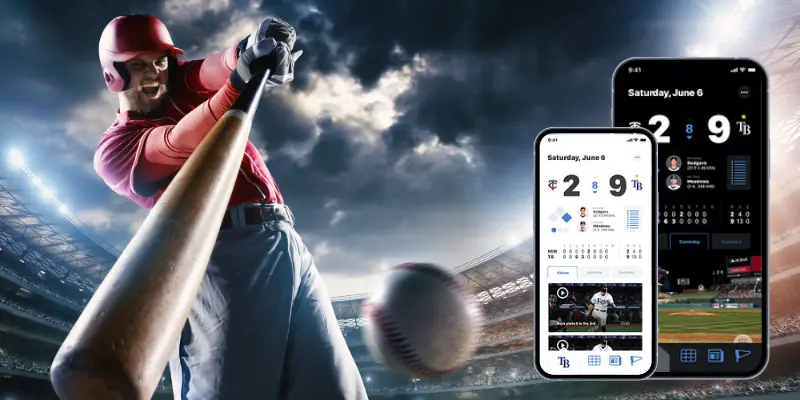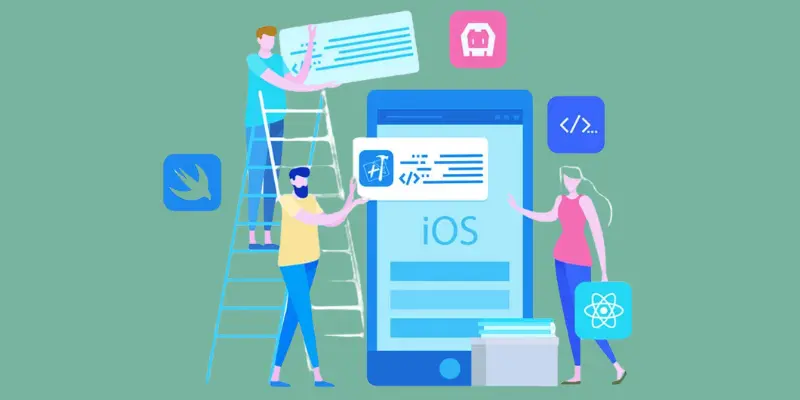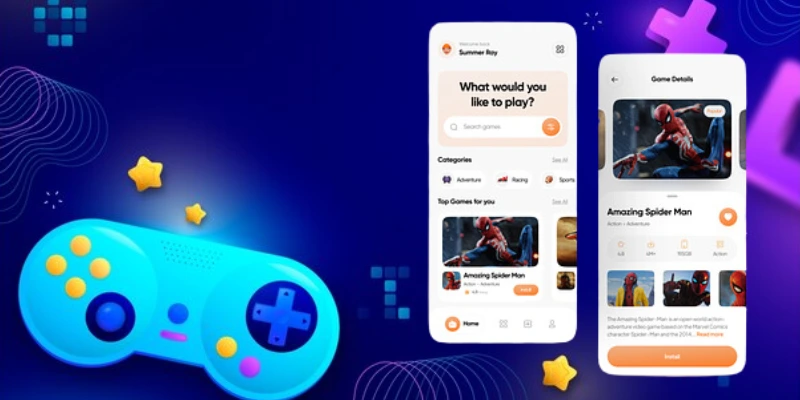Fantasy baseball has created a niche in the always-changing realm of sports. Developing a fantasy baseball app can be a game-changer regardless of your level of experience with fantasy sports or your eagerness to get right into the action. From conceptualization to launch, this definitive guide will coach you through the key stages so that your app not only distinguishes itself in a saturated market but also offers an unmatched user experience.
Imagine building a platform where users may design their dream teams, make real-time decisions, and compete both with friends and total strangers. Watching a live game and tracking your fantasy team's success gives the sport an entirely different degree of involvement. With features like live scoring, player statistics, trade options, and much more, your app may become the preferred choice for baseball fans with the correct strategy.
Get ready to turn your love of baseball into a dynamic, user-friendly tool that keeps people interested and coming back for more. This guide will help you get started, whether you want to make a simple app for casual players or a complex platform for die-hard fans. Let's make your fantasy baseball app creation a home run!
What is a Fantasy Baseball App?
A fantasy baseball app is a digital space enabling users to design and handle baseball teams virtually that comprise Major League Baseball (MLB) players. Users, who are known as managers, choose players according to actual performance and statistics in the MLB games. Usually featuring player drafting, where users select their team members before the season starts, and scoring, where the app computes points depending on the players' performance in areas including hits, home runs, RBIs, and strikeouts.
Users can control their teams throughout the season by trading players, changing lineups, and making calculated moves to optimize their points. Aiming to create the best-scoring team, these apps sometimes include competitive league play, letting users compete against friends or strangers. By strategizing and closely watching their preferred players, fantasy baseball apps such as ESPN Fantasy Baseball, Yahoo Fantasy Sports, and CBS Sports Fantasy Baseball give fans an interactive approach to participating in the game.
Market Overview
The Fantasy Baseball app development sector has witnessed significant growth in the past years, all thanks to the growing fame of fantasy sports. Especially in the US and Canada, the fantasy sports industry enjoys a clientele of millions of users, among which baseball is one of the most common sports played. In 2022, the international fantasy sports industry stood at the worth of $20 billion, considering North America as the biggest market. Fantasy baseball holds a sizable portion of this industry, especially given Major League Baseball's extended season and the committed following of the user base. Participation in fantasy sports in the United States alone counts around 60 million players, and baseball is still one of the most popular choices.
The emergence of mobile technology has upsurged fantasy app development as maximum users rely on handling their teams via phones. Apps including Yahoo Fantasy Sports or ESPN Fantasy Baseball are downloaded by millions of people around the world today. This has driven established as well as new companies to put money into the fantasy sports platform development.
The fantasy sports market is expected to keep growing. By 2030, it could be worth more than $40 billion, according to predictions. This makes it a good place for app makers to make money because more and more people want new and fun fantasy baseball apps. Every year, more and more people play fantasy sports, which means that the market for fantasy baseball apps is likely to grow even more.
Working of a Fantasy Baseball App
A fantasy baseball application helps users generate and regulate their customized baseball online teams, counting upon real-life players. Delve into this breakdown of how fantasy baseball software works:
-
-
Users begin by opening an account on the app. Usually, this entails just setting up a username and password and supplying basic information, including an email address.
-
Users may either start their own league or join an already-existing one. A league is an assembly of players competing against one another all of the baseball season.
-
Every user forms their fantasy squad by drafting actual baseball players. Users may choose players in turns on a live draft or automatically, in which case the software assigns players according to pre-defined rankings.
-
Users start their lineup from their drafted players. This entails deciding which players for forthcoming games will occupy each position.
-
The players' actions for actual baseball events convert into points for the fantasy teams. For instance, the user with a player on their squad gains points whether they strike out an opponent or hit a home run.
-
Users can alter their team at will over the season. This covers exchanging players with other users, acquiring free agents, and modifying their lineup in response to player outcomes and injuries.
-
Users play against one another in head-to-head matches or depending on total points earned over the season. The user with the highest points or record in their league wins at the end of the season.
-
By letting fans test their knowledge and tactical abilities, fantasy baseball app development helps to make following the game more involved and interesting. They offer real-time updates, player stats, and several tools to enable consumers to properly run their teams.
Types of Fantasy Baseball Apps
There are various forms of fantasy baseball apps, each tailored to different types of consumers and offering special functionalities. These are the key types:
Season-Long Fantasy Baseball: Users of these apps are those who wish to participate in fantasy baseball over the whole MLB season. Before the season begins, users create their teams and oversee them all through trades, free agency acquisition, and line-up weekly setups. Users compete against one another each week, either head-to-head where teams earn points in several statistical categories during the season. Two such are Yahoo Fantasy Baseball and ESPN Fantasy Baseball.
Daily Fantasy Baseball: Daily fantasy baseball apps provide contests spanning just one day or one week for individuals who would want a smaller dedication. For every contest, users create a new squad, usually using a salary cap structure whereby every player has a cost and the aim is to assemble the best team within the allocated budget. These apps are well-liked for their daily chance to earn money and rapid turnaround. Leading venues in this category are FanDuel and DraftKings.
Dynasty and Keeper League: These apps appeal to consumers seeking a longer-term, more engaging experience. Users of dynasty leagues retain their whole roster from year to year, therefore developing a squad over several seasons. Though they let users modify the rest while keeping a limited number of players annually, keeper leagues are similar. These structures provide a layer of strategy since users have to take future possibilities into account as well as present performance. These choices are from Sleeper and CBS Sports Fantasy Baseball.
Simulation Fantasy Baseball: These programs simulate running a real-world baseball team. Often with an eye toward realism and depth, users make choices on player growth, trades, and game tactics. The results rely on complex algorithms intended to imitate player performance. One well-known simulation fantasy baseball program is Out of the Park Baseball (OOTP).
Social and Casual Fantasy Baseball: These apps, meant for more relaxed viewers, stress simplicity and social connection. Often with less complicated gameplay, social media integration, and user-friendly interfaces, they have Users can enjoy the game, play with friends, and join public leagues free from the heavy devotion demanded by other forms of gaming. Apps in this category include MLB Beat the Streak and ESPN Streak.
Hybrid Fantasy Baseball: Certain apps mix aspects of several kinds of fantasy baseball. An app might, for instance, include daily contests as well as season-long challenges or combine simulation elements with classic fantasy gaming. Attractive to a wide spectrum of consumers, these hybrid apps seek to offer a complete experience. Two that provide several forms on one platform are Yahoo Fantasy Baseball and CBS Sports Fantasy Baseball.
Also Read : How Much Does Game App Development Cost
Mandatory Features of a Fantasy Baseball App
Designing a robust fantasy baseball app demands integrating distinct key features to guarantee an engaging consumer experience. Let's go through the essential functionalities every app must have:
User Registration: Users should be able to quickly register for accounts and oversee their profiles. This covers configuring personal information, passwords, and usernames. Integration of social media into quick sign-ups improves user satisfaction and degree of comfort.
League establishment and management: Users of the program should be able to start and join leagues. Customizable settings for scoring, draft forms (snake, auction), and roster setups should be among league management tools. Users also should be able to control league settings and invite friends.
Team management: Users want tools to properly run their teams. This covers lineups, trades, player additions or drops, and player stats view-through. Essential are real-time reports on player injury and performance.
Live scoring and updates: One really needs real-time scoring. Users should be able to monitor live the performance of their team with updates on game results and individual statistics. Important event push notifications, such as those for injuries or exceptional performance, keep consumers interested.
Player Records and Analysis: Including thorough player data and analysis guides users toward wise judgments. This covers expert analysis, present-season performance, and historical data. Projections and advanced measures can provide still more value.
Means of Communication: Users using features including chat, message boards, and forums may interact with one another. This improves the social component of the program, hence increasing its interactability and appeal.
Monetization choices: Revenue can be created by including monetizing elements such as in-app purchases, premium subscriptions, and advertising. Providing paid users with advanced features or special material will encourage subscriptions.
Privacy and Security: User data security comes first. Strong security policies like encryption and safe payment channels help to guard user data and foster confidence.
Steps to Build a Fantasy Baseball App
Validation of Idea and Market Research
Before kickstarting development, researching extensively about the market is crucial to get an idea about the target clientele and the level of competition. Keep a check on the fantasy baseball apps already present in the market, record their features, and recognize what they are lagging in. Surveys and conversations with possible users can enable you to validate your idea by learning what they wish in fantasy baseball software.
Define Standard Features
List the key capabilities of your fantasy baseball app once you know your audience. Typical elements are:
-
-
Allow individuals to register accounts and personalize their profiles.
-
Users should be allowed to form public or private leagues as well as join ones
-
Create a simple technique for selecting players depending on actual baseball stats.
-
Throughout games, offer real-time scores.
-
Let users run their teams, including trades, lineup adjustments, and waiver pickups.
-
Share with consumers pertinent data, including game results, trading activity, and forthcoming pairings.
-
Show user rankings in the respective leagues depending on the performance of their teams on a leaderboard.
-
Design the User Interface (UI)
A good and simple-to-use app depends on design. Plan the appearance of your app by building mock-ups or prototypes. Emphasize a neat, user-friendly navigation that makes sense. Users of the UI should be able to rapidly learn how to manage teams, pick players, and join leagues. Particularly pay close attention to how data, including live scores and player stats, will be shown.
Selection of Tech Stack
Determine the technologies you will use to design the app. For instance, if you are a mobile app development company designing a mobile application, you might rely on Flutter or React Native to generate cross-platform applications for Android as well as iOS. For a web application, rely on JavaScript, HTML, and CSS such as Angular or React.js. As far as server-end technology is concerned, Django, Node.js, Rails, or Ruby should be counted upon. The backend manages data of people, league structures, and scoring frameworks. You will require a database to safeguard user and team details, statistics of players, and much more. Common selections can involve Firebase, MongoDB, or MySQL.
App Development
It's time now to create your app. First, arrange the backend, create your database, and work on the APIs that would let your app interface with the server. Work on the front end then, where you will realize your UI designs and guarantee seamless user interactions.
Real-Time Data Integration
Real-time updates form one of the most important features of fantasy sports platform development. Sports data companies like Sportradar or Stat Perform will help you get access to baseball data (statistics, scores, player performance). To guarantee customers obtain the most recent information, you will have to include these APIs in your program.
Testing
Before the app release, test the app thoroughly to eliminate glitches or usability problems. Testing must involve user and automated testing on an equal level. From selecting players to live scoring, have a set of beta users test the app to guarantee that everything runs as it should. Initiate adjustments according to the feedback.
Release and Marketing
Once the app is tested and market-ready, it can be officially launched on virtual app spaces such as the Apple App Store and Google Play Store. Ensure that you adhere to the guidelines these platforms follow for submission of the app. To fascinate the user base, promote the app via different advertising channels, like email marketing, social media, or virtual advertisements. You can get in touch with sports influencers or come up with blogs that aim to please baseball enthusiasts.
Maintenance Post Release
Your efforts continue long beyond launch. Update the program often to improve the user experience, add fresh features, and correct problems. Based on user comments, enhance the app using their ideas. Keep your app relevant by also keeping updated with the newest in fantasy baseball app development.
Also Read : Golf Mobile App Development: A Complete Guide
Cost to Build a Fantasy Baseball App
Several important criteria affect the cost of creating a fantasy baseball app: the complexity of the software, the platform(s) you wish to create for ( iOS, Android, or both), the number of features, and the location and experience of the development team.
Basic App (Single Platform): You should budget between $20,000 and $50,000 for a basic fantasy baseball app, including user registration, league creation, player drafting, and simple live score updates. Usually including development for one platform, either iOS or Android, this fee covers basic user interface (UI) design, back-end server programming, and fundamental app capability. Additionally, limited connection with outside sports data sources is another aspect of this kind of software.
Enhanced UI/UX design, push notifications, detailed player statistics, real-time score updates, and integration with third-party APIs like sports data providers help a more advanced app with cross-platform support ( iOS and Android) rise to $50,000 to $100,000. To guarantee seamless performance for greater user bases, this level of fantasy sports platform development calls for advanced functions and major back-end infrastructure.
If you picture a highly sophisticated fantasy baseball app with live streaming, custom analytics, AI-driven player recommendations, deep real-time data integration, advanced security protocols, and wide third-party services, the cost might run from $100,000 to $200,000 or more. Apps falling under this category also need regular upgrades, ongoing maintenance, and changes grounded in user comments.
Beyond fantasy app development, there are other expenses to take into account, such as server hosting, continuous maintenance, outside API subscriptions (e.g., for sports data providers), and marketing, which, depending on the extent of your needs, might add $5,000 to $20,000 to your budget.
The intricacy of the fantasy baseball software, its feature set, and the level of skill of the development team ultimately determine its building cost.
How to Monetize a Fantasy Baseball App
Making money from a fantasy baseball app means putting plans into action that both value consumers and provide income. Here are some sensible ideas to give thought to:
Purchases within the app: In-app purchases are among the most frequent methods a fantasy baseball program may be monetized. Virtual goods, including premium player stats, enhanced analytics, or special tools providing a competitive edge, can be purchased by users. Providing customizing choices, such as club logos or player avatars, may help draw purchases. Make sure these purchases improve the user experience without giving the game a pay-to-win impression.
Models for Subscription: Using a subscription model will help to guarantee a consistent income. Provide several tiers of subscriptions with access to premium features. A basic subscription might include ad-free use and basic analytics, for instance; a premium subscription might provide advanced numbers, professional assistance, and exclusive content. Monthly or annual membership choices let consumers be flexible and encourage long-term participation.
Advertising: Including commercials in your software is still another great way to make money. You might run video advertisements, interstitial ads, or banner ads. To show your consumers relevant ads, partner with ad networks such as Google AdMob or Facebook Audience Network. Make sure ads are not excessively intrusive to preserve a good user experience; thus, take into account providing a fee-based ad-free alternative to the app.
Sponsorships and collaborations: Work with corporations and brands connected to sports, gaming, or lifestyle to generate sponsorships. While adding value to consumers, sponsored content, branded leagues, or special events might bring income. A sports equipment producer might, for instance, support a league and provide discounts or rewards to members.
Freemium Model: The freemium approach entails charging for premium services while providing the basic form of your program for free. This strategy lets consumers test the software without any initial fee, therefore raising the possibility of user acquisition. Users who are involved could be more ready to pay for extra services or content. Make sure the free edition is entertaining and useful to inspire consumers to update.
Affiliate Marketing: Work with other companies to feature their goods or services inside your app. You might, for instance, offer links to sporting goods, tickets, or streaming services. You get paid a commission when consumers buy using these links. This approach performs best when the recommended items fit your user base.
Competitions and Events: Plan paid entry competitions and contests whereby users may fight for cash prizes or other incentives. Along with making money, this raises user involvement and retention. Make sure the entrance costs are reasonable and the prizes appeal to inspire involvement.
Data monetization: For analytics firms and market research, anonymized data can be invaluable with user permission. Verify that you uphold user privacy and follow data security policies. This approach should be applied carefully and honestly to prevent any mistrust among your consumers.
Conclusion
Creating a custom fantasy baseball app provides a chance for a serious and engaging interface with millions of baseball fans. A successful application must focus on offering an exceptional user experience and be different from competitors based on idea validation or market research down to features and monetization strategy. Incorporating real-time updates, intuitive design, and community engagement can help to cultivate loyal users who become addicted to following competitions only on your app.
At JPLoft, we are experts in designing vibrant and user-friendly fantasy sports platforms for your business needs. Our experienced team can help you realize your vision, whether you want casual players a simple application, or if you want serious fans something comprehensive in nature. Let’s change that baseball obsession into income-generating, profitable applications. Contact JPLoft today to get started with fantasy baseball app development and be prepared for a home run in terms of fantasy sports!












Share this blog